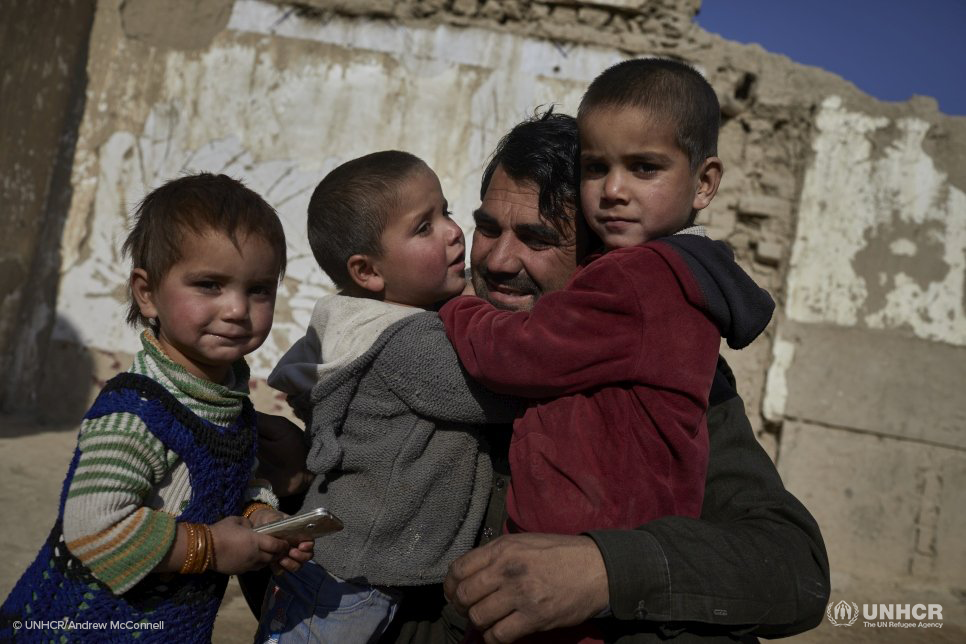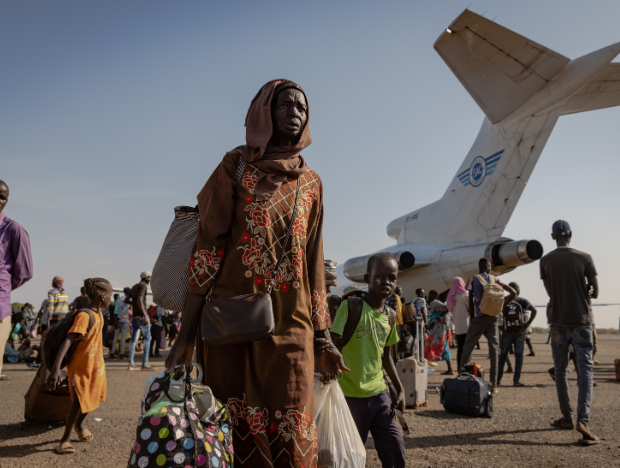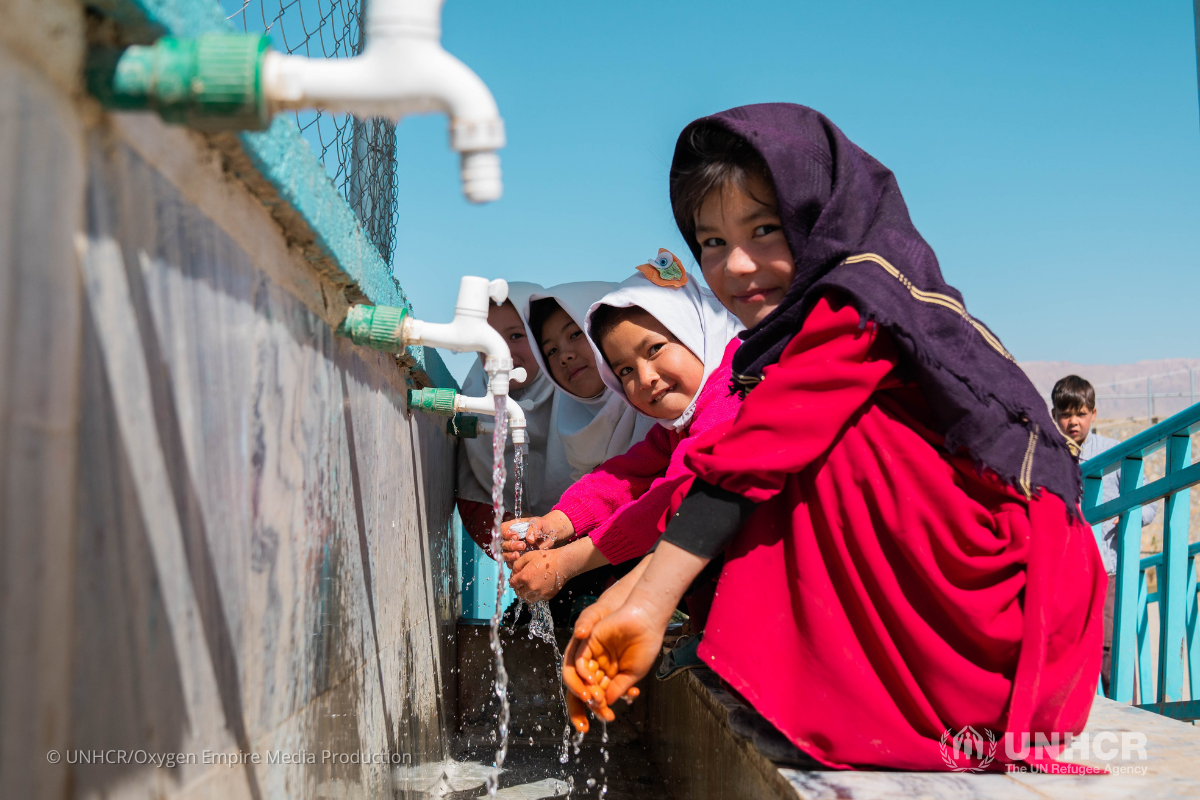Afghans struggle to seek safety as borders remain shut to most
UNHCR, the UN Refugee Agency, is profoundly concerned by escalating risks faced by Afghans seeking to flee into neighboring countries as the situation within Afghanistan continues to deteriorate.

As of today, Afghanistan’s land borders with Pakistan and Iran are open almost solely to those with the required passports and visas, though a small number of medical cases are permitted to exceptionally enter Pakistan without documents. The land borders of Tajikistan and Uzbekistan are closed entirely to Afghans.
The dangers of asylum-seekers being unable to flee Afghanistan are grave, and in some cases life-threatening. Around the world, many forced to flee typically do not have the necessary travel permissions and documents that would ordinarily be required. While all countries have a sovereign right to regulate their borders, exceptions must be made for those seeking safety. Allowing them to enter a country even without documentation, to avoid such dangers, is a life-saving humanitarian gesture and the cornerstone of the international asylum system.
Even prior to the current humanitarian crisis, thousands of Afghans crossed daily into Pakistan and Iran, primarily for the purposes of trade, medical care or to see family members. A majority of movements were temporary, with people returning to Afghanistan after a short period.
Since August, however, UNHCR has received increasing numbers of Afghans in neighboring countries who have approached our offices and partners, indicating their intention to seek asylum. Others still in Afghanistan report hoping to reach neighboring countries to access international protection.
Ongoing barriers to girls’ education and restrictions on women’s movement and ability to work continue to hamper the day-to-day lives of up to half the Afghan population, and hinder humanitarian assistance. The targeting of religious and ethnic minorities, as well as the intimidation and killing of human rights activists, further highlight the life-threatening risks faced by many Afghans. Economic deterioration and widespread hunger in Afghanistan may compel thousands more to leave the country to survive.
While official borders remain closed to the vast majority of Afghans, UNHCR is aware of asylum-seekers crossing into neighbouring countries through unofficial channels. Many entering Iran report having sought the assistance of smugglers in order to leave Afghanistan. Most have told UNHCR and partners they were exposed to serious protection risks on the journey - including extortion, beatings and other violence, particularly against women and girls.
Deportations of Afghans have also escalated from Pakistan, Iran and Tajikistan since August, in contravention of UNHCR’s non-return advisory. Local media citing Iranian authorities report up to 5,000 Afghans arriving each day into Iran. Simultaneously, UNHCR estimates that an average of 3,000 Afghans have been deported from Iran to Afghanistan daily between August and November. In Pakistan, deportations of some 1,800 Afghans were reported during September and October. UNHCR is also seriously concerned by the deportation of twenty-three Afghan asylum-seekers, including women and children, from Tajikistan during the past month. We call on the authorities of all countries to immediately cease the forced return of Afghans, many of whom may be in need of refugee protection.
Whether or not Afghans crossing into neighboring countries have international protection needs can only be decided through a fair and efficient refugee status determination assessment. The relevant national authorities have not yet implemented an accessible asylum system for newly arrived Afghans. As such, it is not possible to assess whether those returned fear persecution and human rights violations in Afghanistan. Forced returns in these circumstances may contravene the principle of non-refoulement and constitute a serious breach of international law.
UNHCR urges all countries receiving Afghan new arrivals to keep their borders open to those in need of international protection. An inability to seek refuge may risk innumerable civilian lives. UNHCR stands ready to help national authorities scale up humanitarian assistance and support accessible and efficient asylum systems as needed.
Background
Newly arrived Afghans are defined as individuals who arrived after 1 January 2021. The total number of reported newly arrived Afghans in need of international protection in neighboring countries is estimated based on several available data sources in each country. These include official estimates of new arrivals provided by national authorities, as well as the number of newly arrived Afghans approaching and registering (or pre-screened) with either UNHCR, partners or Government. The total number of Afghans outside the country but in need of international protection is likely to be much higher.
In Afghanistan, UNHCR has introduced a new tool which allows border monitoring partners to conduct interviews with key informants who are present at a number of entry points, with knowledge of irregular movements of Afghans into Pakistan and Iran.
The vast majority of those interviewed report leaving Afghanistan for security-related reasons. New arrival figures reported for the respective countries of asylum do not necessarily reflect the date of displacement, but rather the date of reporting. Latest available figures are publicly available at https://data2.unhcr.org/en/situations/afghanistan.
Originally reported by UNHCR.


